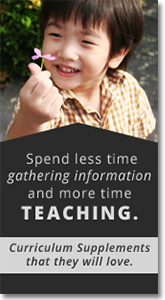ExchangeEveryDay Past Issues
 << Previous Issue
| View Past Issues | | Next Issue >>
<< Previous Issue
| View Past Issues | | Next Issue >> -Hindustani Proverb
“Accompany us on an imaginary trip. Imagine that we are standing in the middle of Times Square, in the heart of New York City. Be still and let your senses explore the environment. What do you notice? How does your body react to the stimuli? If we were standing there together, you would probably describe the dazzling and sometimes blinking lights, the myriad of bright colors, the vast crowds, the towering buildings, the ever-present sounds, and perhaps some interesting smells. All of those sensorial elements combine to create the Times Square experience.
Now, think about the typical early childhood classroom. In many ways, the environment is much like Times Square.” So write Sandra Duncan and Michelle Salcedo in an Exchange magazine article that forms the basis for an Out of the Box Training Kit. The authors urge anyone supporting young children to think carefully about the possible negative impact too much sensory stimulation in the environment might be having on children’s behavior.
are buy one, get one FREE |






Comments (2)
Displaying All 2 CommentsMcKor Shalon Nursery
Cherry Hill, NJ, United States
An article demonstrating a very good example that should be taken into consideration. Unfamiliarity (such as a new environment) can be frightening, but we as adults can harbor our feelings, whereas there are children that tend to act out in a negative way.
Newton, NJ, United States
I completely agree that many of our early childhood environments, including those that would score as "good" or "excellent" in nationally accepted environment rating scales can feel chaotic (especially visually). When we compare pictures of those plastic, busy environments and compare them to reggio-type environments, the differences are dramatic. I'm concerned that we need to rethink what a quality environment means.
Post a Comment